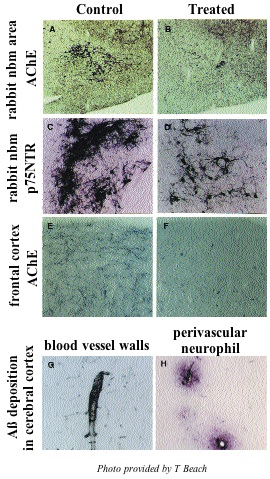Contributed by Brian J. Russell
The newly invigorated BRAIN initiative (Brain Research through Advancing Innovative Neurotechnologies, also known as the Brain Activity Map Project) has placed a premium on understanding the role of each neuron within the human brain. This effort has been our focus for some time via our Targeted Toxin technology. From the mid-nineties papers using 192 IgG-SAP (Cat. #IT-01) to the subsequent work with the multiple-species version ME20.4-SAP (Cat. #IT-15), Advanced Targeting Systems (ATS) has been instrumental in helping experimental neuroscientists discover the function of cholinergic neurons of the basal forebrain and projecting to the hippocampus and cortex. Neither the BRAIN initiative nor ATS is interested in limiting the studies to cholinergic neurons and ATS has been successful in providing a variety of Targeted Toxins for use throughout the brain and nervous systems.
As our customers already know, Targeted Toxins are very cost-effective for studying neuronal pathways. The technology is rapid, conclusive, and available for use in most common lab species. In many scenarios the permanent lesion of a Targeted Toxin can provide a better model than transient lesion techniques. Developing technologies often suffer from difficult-to-interpret negative data and will benefit from the established and growing history of published literature on toxin conjugates, which can be used as positive controls.[1]
Optogenetics is a technology that is making amazing progress in helping to understand the intricacies of neuronal pathways. Despite the difficulties and time associated with viral vector construction and opsin introduction to the neurons of interest, the ability to use different opsins to either excite or inhibit neurons in a temporary manner is a very useful technique. However, the equipment and techniques necessary to effectively use optogenetics may prove to be an obstacle in some situations. What will be interesting to see is how the technology of Optogenetics attempts to clear the hurdle presented by larger species such as primates and the ultimate goal of the BRAIN initiative, which is to map the human brain. Particular difficulties include stimulating neurons that are deep inside the larger brains of primates and any potential long-term damage associated with repeated probing with optical fibers.[2] Lastly, as the pharmaceutical industry embraces toxin conjugates for new treatment options, the clinical uses for optogenetics are less clear due to ethical and complexity considerations.
References: (back to top)
- Baxter MG, Bucci DJ. (2013) Selective immunotoxic lesions of basal forebrain cholinergic neurons: twenty tears of research and new directions. Behav Neurosci, in press.
- Gerits A, Vanduffel W. (2013) Optogenetics in primates: a shining future? Trends Genet, in press.

